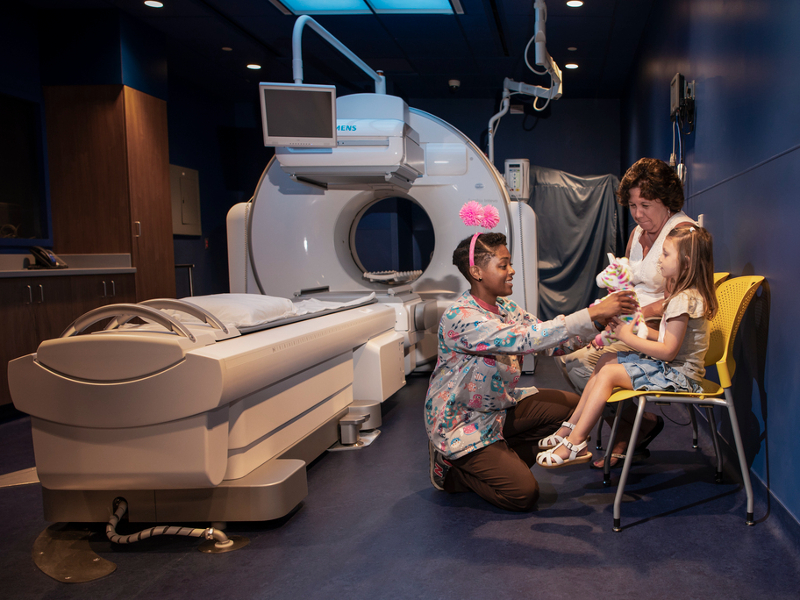Treatment
Pediatric Fine Needle Aspiration
What is the thyroid gland?
The thyroid gland is a butterfly-shaped organ found in the neck just below the Adam’s apple. The thyroid gland is responsible for producing thyroid hormone, an important hormone that stimulates the metabolism of the body.
What is a fine needle aspirate (FNA) of the thyroid?
First, your child's doctor in the Children's National Hospital Interventional Radiology program will perform an ultrasound to look for abnormal-looking areas (nodules, cysts or masses) on the thyroid gland. The doctor will insert a very thin needle into the gland and withdraw a tiny sample of tissue or fluid. Another doctor will look at the sample under a microscope to determine what might be wrong. The lab results will be sent to the referring physician who will communicate with you. It usually takes a couple of days to get the lab results.
Frequently Asked Questions
Will my child be awake during the fine needle aspiration procedure?
Will my child have pain after the fine needle aspiration procedure?
How long does this fine needle aspiration procedure for children take?
What are the risks associated with fine needle aspiration of the thyroid in children?
Are there any activity restrictions after a fine needle aspiration for children?
Meet the Fine Needle Aspiration Providers
Departments that Offer Fine Needle Aspiration

Interventional Radiology
Children's National interventional radiologists perform a full range of minimally invasive, image-guided procedures to both diagnose and treat disease in infants, children and adolescents. Learn more about how we help children in our care.

Help Kids and Make a Difference
Invest in future cures for some of life's most devastating diseases. Give today to help more children grow up stronger.







